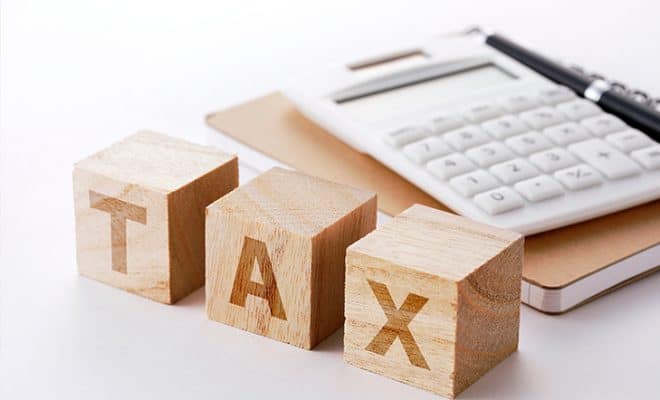What is an Exchange-Traded Fund (ETF)? – Beginner’s Guide
The stock market can be both intimidating and attractive to people at the same time. It can offer significant returns on investments and sometimes lead to losses too. Markets are unpredictable, and there is always a risk. But there are also several ways to counter the uncertainties. With the right investment choices and strategies, it is possible to minimize risk and maximize returns. For that purpose, an ETF – exchange-traded fund is a perfect fit for those who want the comfort of stock trading, along with the diversification aspect of mutual funds. Exchange-traded funds combine the favorable attributes of stocks and mutual funds to create a basket of securities. This basket can include stocks, bonds, commodities, or a blend of all of these. ETFs can be customized to suit individual investment goals and risk preferences.
Here is a beginner’s guide on exchange-traded funds:
Table of Contents
What is an ETF?
An ETF or exchange-traded fund includes a combination of securities traded on an exchange. This pool of investment offers diversified and low-cost access to a specific area of the market. These funds include investments in stocks, bonds, commodities, currencies, or a combination of these. ETFs allow investors to buy a basket of assets without purchasing each market security individually. The shares purchased by the investor represent the proportional interest of the person in the overall pool of assets.
ETFs mimic mutual funds in all aspects but have one major difference. Unlike mutual funds, investors can buy shares in an ETF from a brokerage account like purchasing shares. Thus, combining ease of share trading and the benefits of mutual funds to offer one of the most coveted investments in the modern market. Moreover, low-cost and diversified index fund management adds to the popularity of exchange-traded funds. According to reports, in 2008, U.S. investors contributed approximately $530 billion in ETFs. As of May 2020, the number had grown to more than $4 trillion, with nearly 2,177 ETFs traded on the stock exchanges in the U.S. Even though ETFs were first launched in 1993, the funds shot to popularity only after the 2008 financial crisis that shook the US economy.
How do ETFs Function?
ETFs are one of the most valuable market products that have appealed to investors because of several reasons, the primary one being their easy functioning and trading. Here’s a brief explanation of how ETFs function:
- An ETF provider combines assets, like stocks, bonds, commodities, etc. into a basket and links them with a unique market ticker. This could include commodities such as gold, or indexes like the S&P 500, the Bloomberg Barclays U.S. Aggregate Index, etc.
- This basket of securities has an intraday price and are up for sale like company stocks.
- Investors can buy and sell a share of the ETF anytime during the trading day, unlike mutual funds that only trade once a day. However, investors will not own the underlying asset of the ETF.
That said, even though trading is similar to stocks, the outstanding number of shares of an ETF varies every day. This happens because new shares are added, and existing shares are redeemed daily. This process of creation and redemption of shares helps ETFs match their prices with underlying securities.
How many types of ETFs are there in the markets?
Exchange-traded funds are classified according to the type of investments they hold. There are several types of ETFs in the market that help to speculate on, increase income and prices, and hedge portfolio risk. Some of the most common and popular ETFs are:
- Bond ETFs: These are exchange-traded funds, which include investments in all fixed-income securities, such as US Treasuries, corporate municipal bonds, high-yield bonds, and others. Bond ETFs do not have a maturity date. Hence, they are best for investors who want a consistent cash influx.
- Stock ETFs: These are exchange-traded funds linked to a specific set of equities like an index. They are fit for long-term growth and are less risky as compared to separate stocks.
- Commodity ETFs: These exchange-traded funds track a specific set of commodities like gold, crude oil, corn, coffee, etc. Commodities are all raw goods that can be traded. A commodity ETF combines various commodities into a specific investment available for trading. However, investors need to know what comprises a commodity ETF.
- Sector ETFs: Also known as industry ETFs, these exchange-traded funds are associated with a specific industry or sector like banking, oil and gas, health care, technology, etc. The U.S. stock market consists of 11 sectors, each of which has companies of that particular industry. Sector or industry ETFs are ideal for investors that target short-term gains based on business cycles – expansion and contraction.
- International ETFs: Also known as foreign exchange-traded funds, these ETFs have links with non-US markets. These could include stocks of an individual country or a block of countries and are less risky. It is advisable to combine international ETFs with U.S. stocks and bonds to enhance diversification and reduce risk.
- Currency ETFs: These are a type of exchange-traded funds that offer the investor exposure to a specific foreign currency or a combination of currencies. These funds contain future currency contracts. Hence, investors should be cautious while buying or selling these ETFs.
- Inverse ETFs: These exchange-traded securities benefit from the falling of the underlying market or index fund. In this, investors generally sell anticipating a fall in prices and repurchase the same at a lower value.
What are the pros and cons of investing in ETFs?
ETFs have become a preferred investment choice for both Wall Street and Main Street investors. Essentially because of their low-cost, diversification, and expert management. However, investors should understand the advantages and disadvantages of ETFs before investing.
Pros of investing in ETFs
- ETFs offer vertical and horizontal diversification. Investors can choose ETFs categorized as per stocks, commodities, bonds, etc. They can also invest in sector-specific funds like health care, oil and gas, etc.
- Unlike mutual funds, ETFs offer investors the ease of buying and selling any time of the day.
- Most ETFs correlate to an index, the holdings, and prices of which are published each day; thereby, increasing transparency.
- When compared to mutual funds, exchange-traded funds are more tax-efficient, since taxes are levied only upon selling. In the case of mutual funds, taxes imply throughout the investment period. Hence, ETFs result in lesser capital gain distributions.
- Investors can micro-manage ETFs by placing a variety of order types like stop-loss, limit-loss, etc.
Cons of investing in ETFs
- ETFs might have huge trading costs and commission charges for investors who make smaller and frequent investments.
- Since ETFs are not traded frequently, investors might not be able to keep track of market prices. This can delay the sale and block money.
- In some cases, technical discrepancies can cause a flaw in tracking index prices of funds.
- The funds from the sale of an ETF are not immediately available to the investor. The amount is credited only after 2 days once the ETF settles. In this period, the investor loses the chance to reinvest their funds further.
To sum it up
ETFs have advanced for the past 27 years. In the future, more ETFs and better features might lure additional investors. But investors need to be careful while making decisions related to ETFs. It is good to understand goals and choose ETFs that best match their needs. Since these funds require active and expert management, you can also consider contacting professional financial advisors for the right support.
















